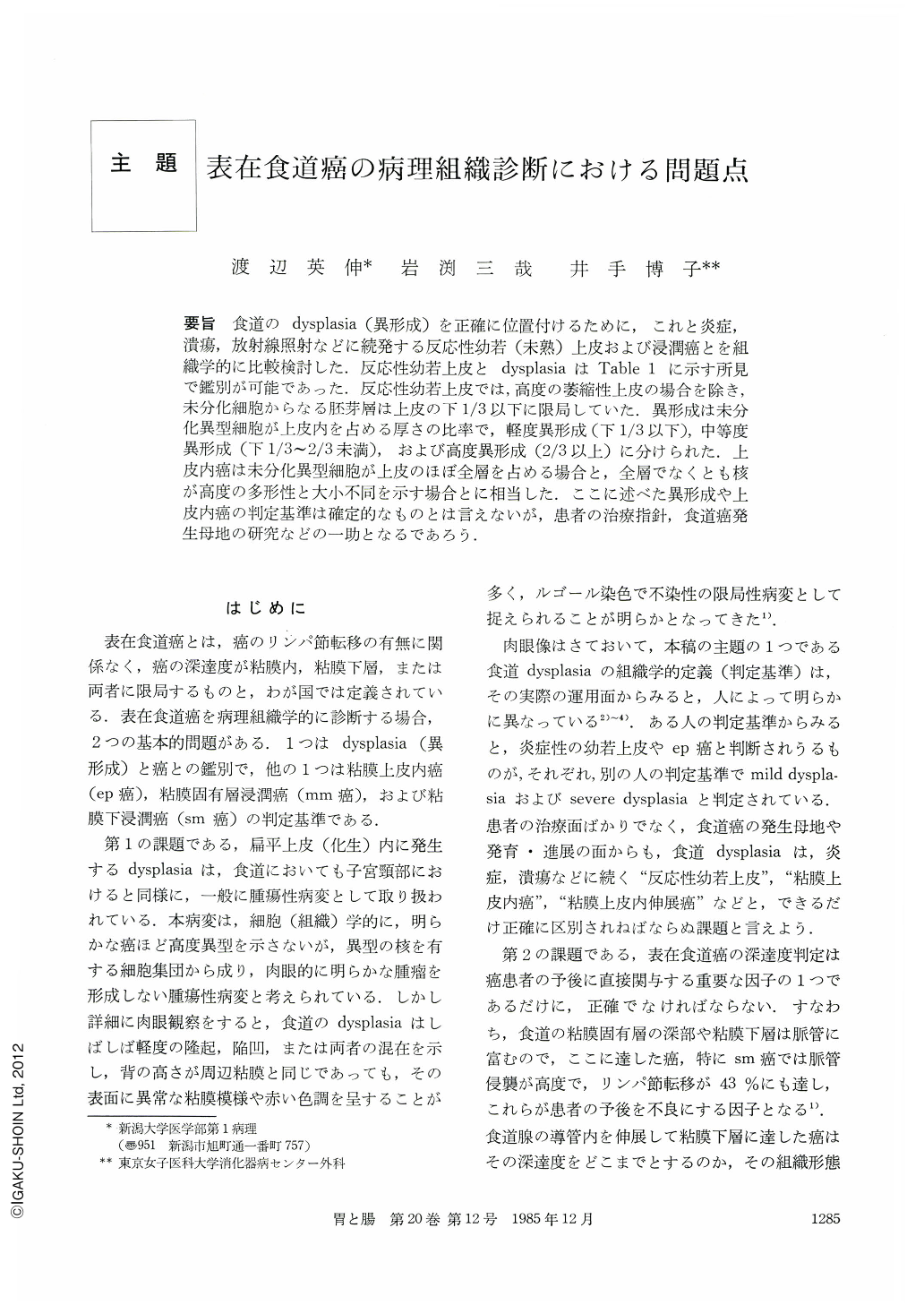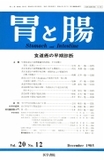Japanese
English
- 有料閲覧
- Abstract 文献概要
- 1ページ目 Look Inside
- サイト内被引用 Cited by
要旨 食道のdysplasia(異形成)を正確に位置付けるために,これと炎症,潰瘍,放射線照射などに続発する反応性幼若(未熟)上皮および浸潤癌とを組織学的に比較検討した.反応性幼若上皮とdysplasiaはTable 1に示す所見で鑑別が可能であった.反応性幼若上皮では,高度の萎縮性上皮の場合を除き,未分化細胞からなる胚芽層は上皮の下1/3以下に限局していた.異形成は未分化異型細胞が上皮内を占める厚さの比率で,軽度異形成(下1/3以下),中等度異形成(下1/3~2/3未満),および高度異形成(2/3以上)に分けられた.上皮内癌は未分化異型細胞が上皮のほぼ全層を占める場合と,全層でなくとも核が高度の多形性と大小不同を示す場合とに相当した.ここに述べた異形成や上皮内癌の判定基準は確定的なものとは言えないが,患者の治療指針,食道癌発生母地の研究などの一助となるであろう.
Histological definition on esophageal dysplasia is complicated in the world. To make it clearer, we histologically made a comparative study of reactive immature epithelium in esophagitis, dysplasia and carcinoma of the esophagus.
It was found possible to differentiate reactive immature epithelium (Figs. 2-6) from dysplasia (Figs. 7-10) histologically, as shown in Table 1. The germinal layer of the former was surely limited within a lower third of the esophageal epithelium, except for a severe atrophic esophagitis.
Dysplasia was subdivided into three grades (mild, moderate and severe) with an epithelial thickness occupied by undifferentiated neoplastic cells: mild, moderate and severe dysplasias were defined as the neoplastic cells were limited within a lower third thickness (Fig. 7), from a lower to a middle third (Figs. 8, 9), and in the more thickness (Fig. 10), respectively.
Intraepithelial carcinoma was defined as the undifferentiated neoplastic cells occupied the whole thickness of the epithelium or even if they didn't, showed a marked pleomorphism and variety in size of the nuclei (Figs. 11, 12).
The definition of dysplasia and intraepithelial carcinoma described herein may not be a complete one. However, we believe that it is more objective and reproducible than the previous.

Copyright © 1985, Igaku-Shoin Ltd. All rights reserved.


